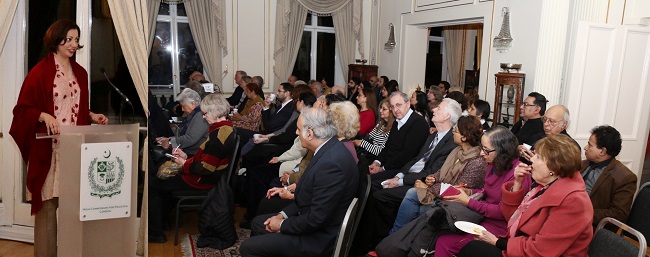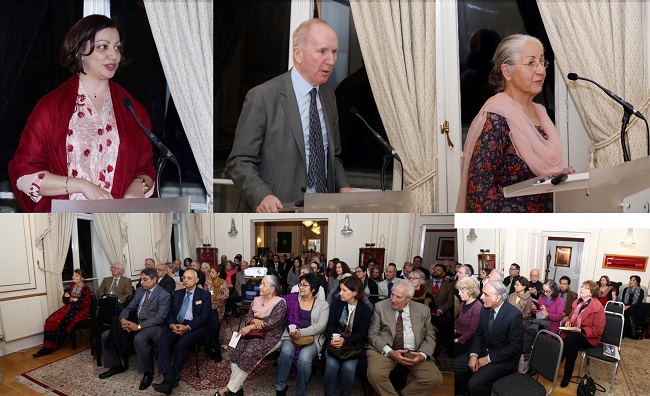Talk by Dr Mehreen Chida-Razvi at the High Commission

Architectural Jewels of Pakistan – from Sind to the Hunza Valley

Dr Mehreen Chida-Razvi gave an illustrated talk on “Architectural Jewels of Pakistan – from Sind to the Hunza Valley” at the Pakistan High Commission London on 14 December 2016. The event was jointly organized by The Pakistan Society and the High Commission.
This superbly illustrated talk by Dr Mehreen Chida-Razvi was both a celebration and a serious discussion of the extraordinary richness and diversity of the architecture of Pakistan. Ranging across time from the beginning of the second millennium to the nineteenth century, and spanning the geographic breadth of Pakistan, she explained the whens, whys and hows of many of Pakistan’s greatest architectural gems, focusing specifically on funerary and palatial spaces.
Dr Chida-Razvi presented her talk as a series of case studies, describing the architecture and, almost more importantly, explaining the context in which it came into being. While Pakistan’s predominantly Muslim heritage takes centre stage, she also included buildings and sites created by, and for, other religious groups and peoples, including the Sikhs and Huns.
Dr Chida Razvi encompassed monuments from the fabulous necropolis of Makli Hill to the grand Muslim mausoleums commemorating a single saint or ruler, and explored a range of palatial residences from those built for the Shamanistic rulers in the Hunza Valley to those of the Sultanates and Mughals.

Among many architectural jewels of Pakistan, Dr Chida-Razvi gave a detailed presentation on the architectural and historical aspects of Lahore Fort, Altit and Baltit Forts in Hunza, Sheesh Mahal, and Tomb of Shah Rukn-e- Alam in Multan.
Dr Mehreen Chida-Razvi is a Research Associate in the Department of the History of Art at SOAS, and Assistant Editor for the International Journal of Islamic Architecture. She is a specialist on the art, architecture and material culture of Mughal South Asia and has lectured extensively on Islamic and Indo-Islamic Art at SOAS, University of London, the Court auld Institute of Art, the University of Oxford, the Victoria & Albert Museum, and Sotheby’s Institute of Art.

